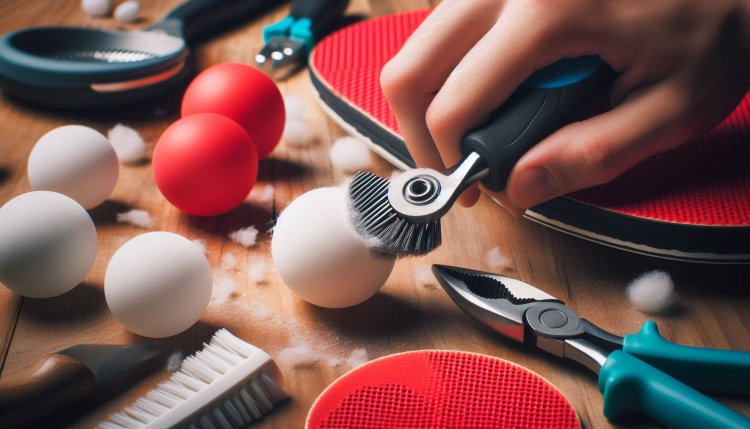How to Get Dents Out of Ping Pong Balls: 6 Easy Repair Methods
Discover 6 proven methods to remove dents from ping pong balls and restore their shape. Learn prevention tips and when to replace damaged balls for optimal gameplay.
Ping pong balls are essential for a smooth, competitive game of table tennis. However, they’re notoriously fragile and prone to dents from impacts, improper storage, or accidental crushing. While replacing dented balls is an option, frequent purchases can add up. Fortunately, there are simple, cost-effective ways to fix dented ping pong balls and extend their lifespan. In this guide, we’ll share six easy methods to remove dents, along with tips to prevent damage and maintain your equipment.
Why Do Ping Pong Balls Dent?
Before diving into repairs, it’s helpful to understand why dents occur. Ping pong balls are made of thin, lightweight plastic (historically celluloid, now often non-flammable ABS). Their hollow structure makes them highly responsive but vulnerable to:
-
Hard impacts (e.g., slamming against a table edge).
-
Stepping on or crushing the ball accidentally.
-
Temperature changes causing uneven expansion or contraction.
-
Poor storage, such as leaving balls in direct sunlight or under heavy objects.
-

Minor dents can affect the ball’s aerodynamics, leading to erratic bounces. Thankfully, most dents can be reversed using household items.
6 Methods to Remove Dents from Ping Pong Balls
1. Hot Water Method
Hot water is the most popular technique for repairing dented ping pong balls. The heat softens the plastic, allowing it to expand and regain its shape.
Steps:
-
Boil water and let it cool slightly (to ~160°F/70°C to avoid melting the ball).
-
Submerge the dented ball in the hot water for 2–3 minutes.
-
Remove the ball with tongs and inspect it. If the dent remains, repeat the process.
-
Let the ball air-dry before use.
Tip: Add a pinch of salt to the water to slightly increase the boiling point for better results.
2. Hair Dryer Technique
A hair dryer provides targeted heat to “pop” dents out quickly.
Steps:
-
Set the hair dryer to medium heat.
-
Hold the ball 6–8 inches from the nozzle, rotating it to evenly warm the surface.
-
Focus on the dented area for 1–2 minutes until the plastic expands.
-
Let the ball cool and check for improvements.
Safety Note: Avoid high heat settings to prevent warping or melting.
3. Freezer Fix
Temperature changes can leverage air pressure to push dents out.
Steps:
-
Place the dented ball in a sealed plastic bag.
-
Put the bag in the freezer for 4–6 hours.
-
Remove the ball and let it thaw at room temperature.
-
The contracting and expanding air inside may help the ball regain its shape.
Best For: Small dents caused by minor impacts.
4. Boiling Water Steam
Steam offers gentle, even heat for stubborn dents.
Steps:
-
Boil a pot of water.
-
Hold the dented area of the ball over the steam (use tongs to avoid burns).
-
Rotate the ball for 30–60 seconds.
-
The steam will soften the plastic, allowing the dent to pop out.
5. Sunlight Exposure
Natural heat from sunlight can slowly restore the ball’s shape.
Steps:
-
Place the dented ball in direct sunlight for 2–4 hours.
-
Rotate it periodically to ensure even heating.
-
Bring the ball indoors and let it cool.
Ideal For: Players in hot climates or during summer months.
6. Pressure Adjustment with a Straw
This creative method uses air pressure to fix dents.
Steps:
-
Insert a plastic straw into the dented area.
-
Gently blow into the straw to add pressure inside the ball.
-
Simultaneously massage the dent outward with your fingers.
-
Remove the straw and check the results.
How to Prevent Dents in Ping Pong Balls
Prevention is key to avoiding frequent repairs:
-
Store balls in a rigid container (not a plastic bag) to protect them from crushing.
-
Keep away from extreme temperatures (e.g., garages or cars in summer).
-
Use quality balls (ITTF-approved balls are more durable).
-
Avoid stepping on or sitting near balls during play.
When to Replace a Ping Pong Ball
While minor dents can be fixed, severely damaged balls should be replaced. Signs it’s time for a new ball:
-
Cracks or splits in the plastic.
-
Permanent warping or uneven shape.
-
Loss of bounce consistency.
For competitive play, always use regulation balls to ensure fair gameplay.
FAQs About Fixing Ping Pong Balls
Q: Does heating damage ping pong balls?
A: Moderate heat is safe, but excessive heat (e.g., open flames) can melt or warp the plastic. Stick to methods like hot water or steam.
Q: How many times can you repair a dented ball?
A: Most balls withstand 2–3 repairs before the plastic weakens. Overheating reduces longevity.
Q: Can you use a microwave to remove dents?
A: No! Microwaves can melt the plastic or cause the ball to burst.

Q: Do repaired balls perform like new ones?
A: Minor dents can be reversed without affecting performance, but severe damage may impact bounce and spin.
Final Thoughts
Learning how to get dents out of ping pong balls saves money and reduces waste. While these methods work for casual play, competitive players should prioritize using undamaged, ITTF-approved balls for optimal performance. For more tips on maintaining your table tennis gear, check out our guide on [How to Clean Ping Pong Paddles].
By following these repair techniques and prevention strategies, you’ll keep your ping pong balls in top shape and enjoy a seamless game every time!
What's Your Reaction?

















